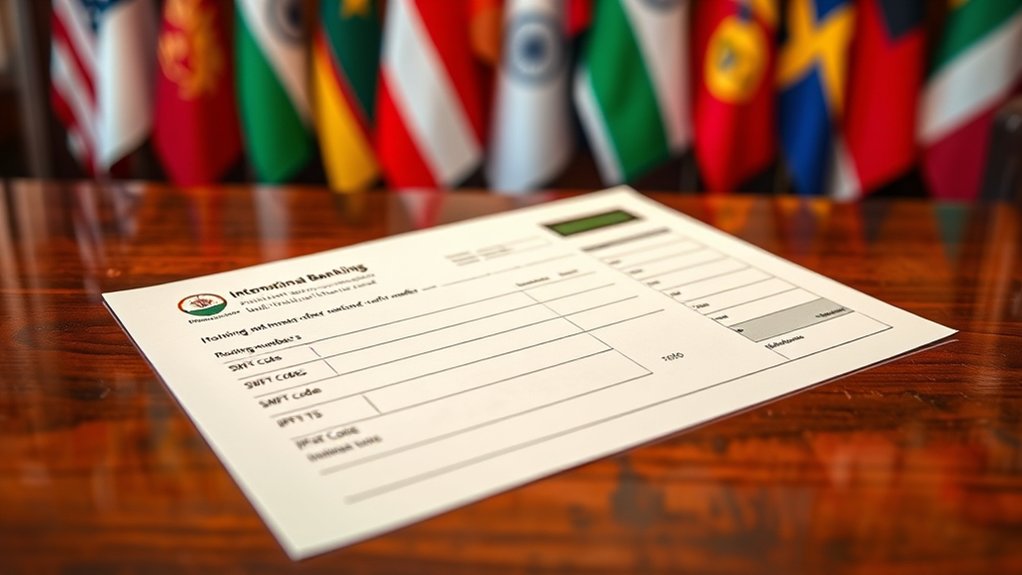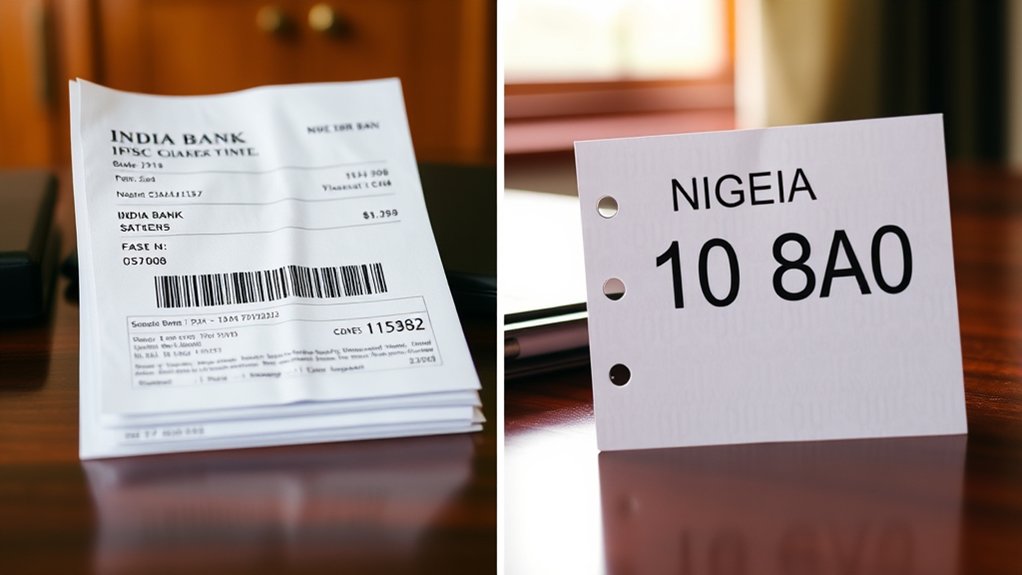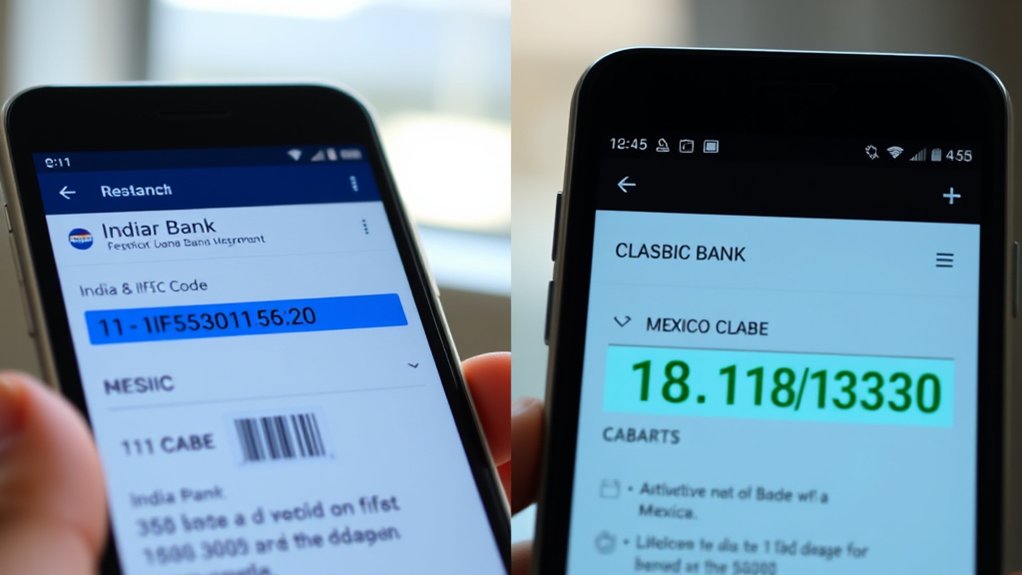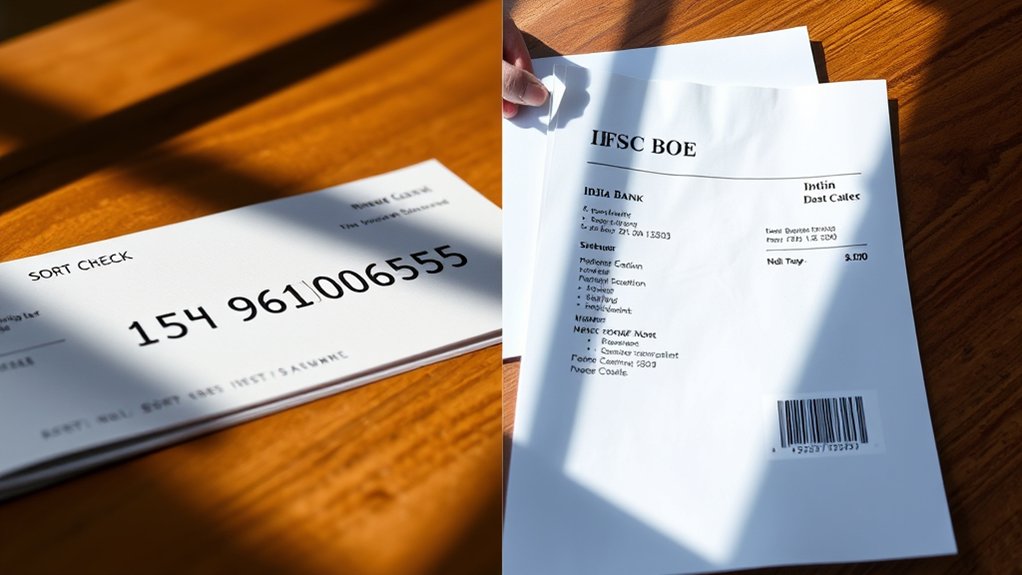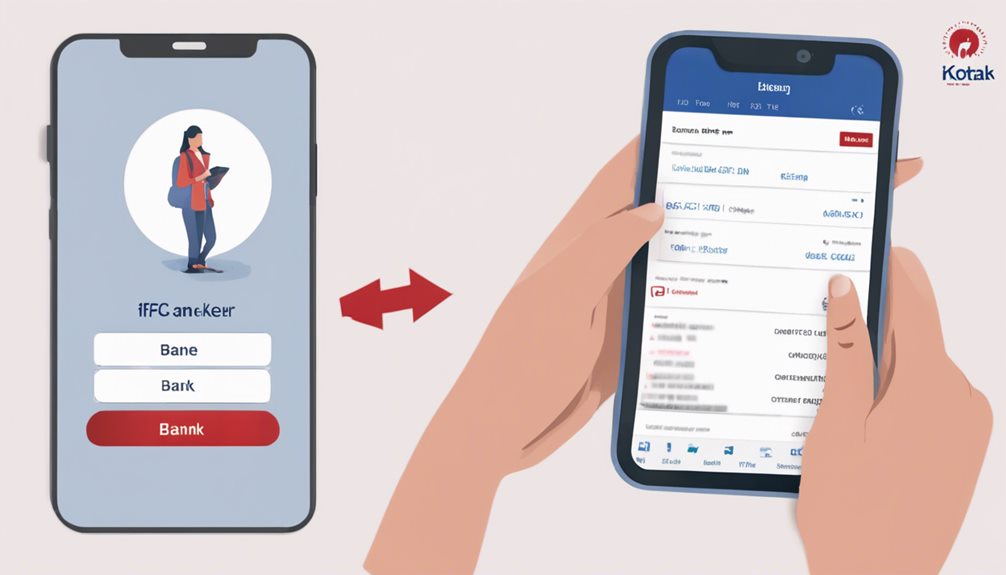
No, your IFSC code isn’t the same as a BIC code. While both serve as bank identification numbers, IFSC codes are specific to India’s domestic banking system for local transfers through NEFT, RTGS, and IMPS. BIC codes, however, operate internationally through the SWIFT network for cross-border transactions. They also differ in structure: IFSC uses 11 characters for Indian banks, while BIC codes use 8-11 characters globally. Understanding these distinctions helps guarantee proper transaction routing.
Understanding SWIFT/BIC and IFSC Codes
While IFSC and BIC codes serve similar purposes in banking transactions, they operate within distinct systems and jurisdictions.
You’ll find that IFSC codes, regulated by the RBI, facilitate domestic transfers within India through NEFT, RTGS, and IMPS systems, while BIC security protocols guarantee international transaction integrity through the SWIFT network.
Understanding the structural differences is vital for mastering these systems.
IFSC regulations mandate an 11-character format combining bank and branch codes with a fixed character. In contrast, BIC codes incorporate bank identifiers, country codes, and location markers, with optional branch specifications.
When you’re conducting financial transactions, you’ll need to use IFSC codes for domestic Indian transfers and BIC codes for cross-border payments, as they serve complementary but separate roles in the global banking infrastructure.
Structure and Components of Both Codes
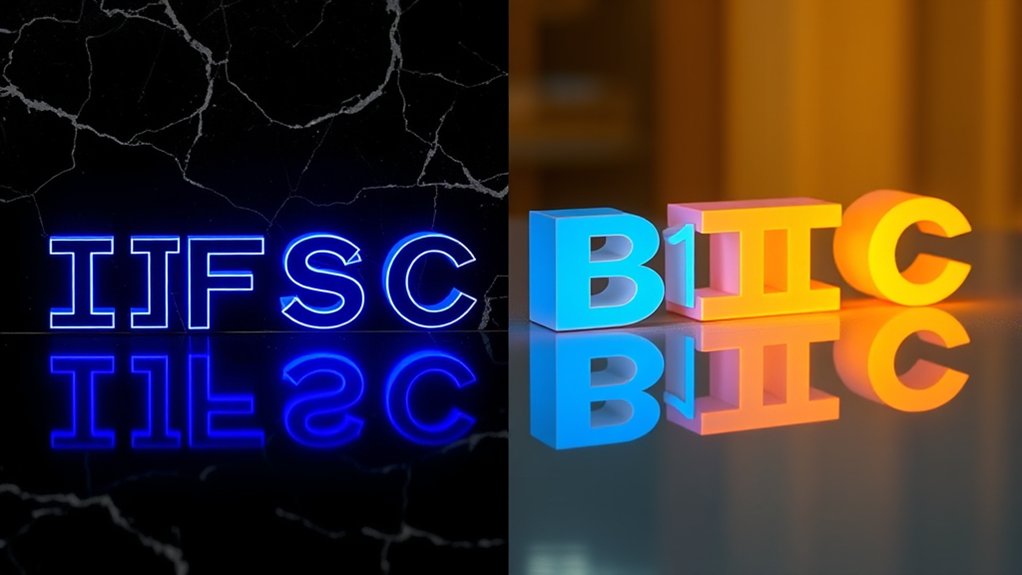
Although both codes serve as financial institution identifiers, IFSC and BIC codes feature distinct structural compositions that reflect their specific purposes.
In a code comparison, you’ll find that IFSC codes maintain a strict 11-character format, with four characters denoting the bank code, followed by a zero control character, and six characters representing the branch code.
BIC codes, alternatively, can range from 8 to 11 characters, comprising a four-letter bank code, two-letter country code, two-character location code, and an optional three-character branch identifier.
These banking identifiers operate under different regulatory frameworks – IFSC codes fall under RBI’s jurisdiction for domestic Indian transactions, while SWIFT manages BIC codes for international transfers.
Understanding these structural differences is essential for executing accurate financial transactions across domestic and international networks.
Key Differences in Usage and Purpose

Despite their similar roles in banking identification, IFSC and BIC codes serve fundamentally different purposes in the global financial ecosystem.
You’ll use IFSC codes exclusively for domestic transactions within India’s banking system, including NEFT, RTGS, and IMPS transfers. In contrast, BIC codes facilitate international transactions across borders worldwide.
The regulatory frameworks also differ considerably. While the RBI oversees IFSC codes as part of India’s banking regulations, SWIFT maintains and regulates BIC codes for global banking operations.
You’ll notice this distinction when initiating transfers: domestic Indian transactions require IFSC codes for accurate routing between local branches, whereas international wire transfers depend on BIC codes to guarantee proper cross-border fund movement.
This separation maintains clear protocols for both domestic and international banking operations.
Global vs. Domestic Banking Applications
Once you understand the distinct operational domains of IFSC and BIC codes, their banking applications become clearly defined.
You’ll find IFSC codes exclusively within India’s domestic banking infrastructure, facilitating transfers through NEFT, RTGS, and IMPS systems. The RBI’s oversight guarantees standardized domestic transactions across Indian banks.
In contrast, BIC codes operate on a global scale, enabling international transactions across more than 200 countries through the SWIFT network.
You’ll need a BIC code when conducting cross-border transfers, as over 11,000 financial institutions worldwide recognize this standardized format.
While IFSC codes serve India’s internal banking needs with their 11-character format, BIC codes’ 8-11 character structure supports the complexities of international banking operations, making them essential for global financial connectivity.
How to Find and Verify Your Codes
Locating your IFSC or BIC code requires direct access to reliable banking sources and verification methods.
You’ll find enhanced code accessibility through your bank account passbook, statements, or the RBI website for IFSC codes. For BIC codes, access your bank’s official website or online banking platform.
To guarantee transaction security, verify these codes through multiple channels. Cross-reference IFSC codes with the RBI’s thorough database, and confirm BIC codes directly through your bank’s customer service.
Online financial directories offer specialized tools for code verification based on bank and branch parameters. Before initiating any transfers, implement a double-verification process to prevent transaction errors.
This systematic approach to code validation helps maintain the integrity of your domestic and international banking operations.

